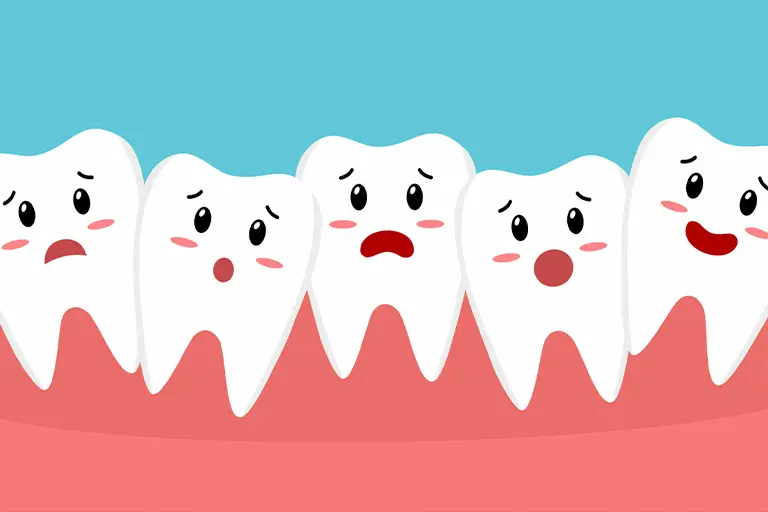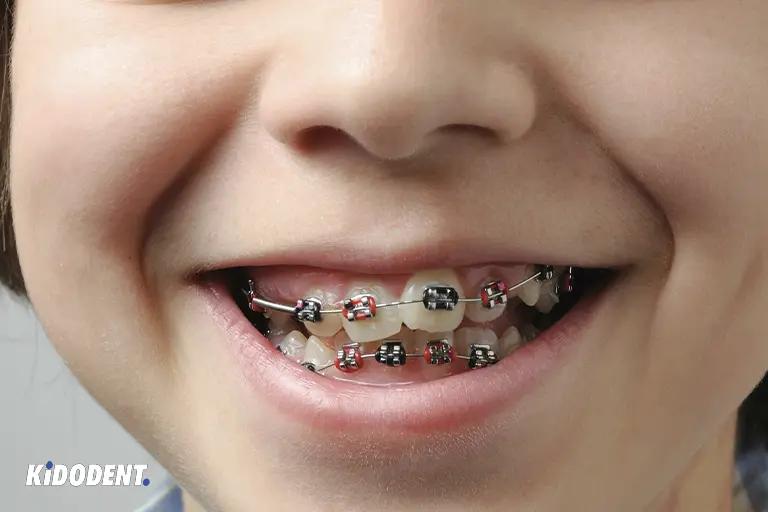The childhood period is full of firsts from walking and the emergence of first teeth. Seeing your baby grow in their teeth is a sweet experience that every parent wants. But sometimes, you are concerned about the way your child’s teeth are coming in crooked and at different angles.
Normally, children have some degree of spacing and misalignment. It’s not always a problem as you might think. Every stage of teeth development is comprised of one tooth erupting after the other and baby teeth falling to make room for permanent teeth.
As long as your dentist sees normal teeth and jaw development, you don’t need to get worried. There are reasons behind your child’s crooked teeth, which we will discuss.
Your child may have severely overcrowded teeth, small jaw size, or misaligned and out-of-place teeth that can contribute to many oral health problems. These can also lead to difficulty in chewing properly and speaking clearly. A pediatrician’s visit is always necessary to rule out the malocclusion signs in teeth and jaws and diagnose the presence of oral and dental diseases.
What are the causes of my child’s crooked teeth?
Children’s baby teeth come in crooked. Now what? Does it really matter? and how am I going to know it is just a common occurrence and not a big deal?
The first thing to know is that the human orofacial region is one of the most complex parts of human anatomy. The lower jaw (mandible) and the upper jaw (maxilla) physiology and the long-time habits of sucking fingers or pacifiers are just some primary reasons behind a crooked tooth, which will impact the child’s later dentition growth.

Your child’s teeth go through many genetic and environmental factors to develop from just a bud to its bony characteristics.
Now it is time to discuss the main causes of child’s crooked teeth:
- Not enough space to grow normally
-
Lack of enough space for teeth can cause the baby’s teeth to come in crooked. A child with a smaller arch size in the jaw is more likely to have teeth that grow in with irregular forms, which can cause overcrowding in teeth. When you see interdental spaces between the primary teeth of a child, it is a good sign. Around the ages of 5 and 6 years, the space between the teeth will decrease because of permanent teeth eruption.
Therefore, space between teeth is not always a concern and it is common among children. It indicates enough dental space for later permanent dentition to grow normally.
Pediatric dentists will help you manage the development of teeth and detect any serious jaw problems early on. If the jaw is small and bite problems may create serious forms of deformities, pediatric dentists refer you to an orthodontist for treatment planning.
Orthodontists have many great techniques up their sleeves. They can use appliances such as palatal expanders to grow jaws and teeth into perfect positions.
- Missing teeth
-
Children can have missing teeth in both primary and permanent teeth development. Some teeth come in later and others earlier, so it is normal to see children’s crooked teeth. By the time your child gets to 4, their primary teeth are fully grown. Then comes the mixed dentition where primary teeth fall and permanent ones start to appear. Finally, by 20 years of age, all permanent teeth are in except for impacted ones like wisdom teeth.
If a child is missing a tooth due to early primary tooth loss, accidents, or other reasons, teeth can shift into the missing area. This causes crooked teeth with twists and misalignment. It can be mild or extreme.
For primary teeth, pediatric dentists may ask to wait for the eruption of permanent teeth to see if it is causing a problem or not. For missing permanent teeth, the issue requires orthodontic treatment. Orthodontists plan for space management, using appliances like space maintainers, to lead your child’s teeth into normal occlusion.
- Thumb sucking or pacifier use
-
Thumb-sucking has many destructive effects on babies’ teeth. Your kid may have experienced the habit of sucking on their thumb or other fingers or using a pacifier for a long period of time during their childhood. Parents introduce pacifiers to children to calm their babies and stop them from crying. Ok, it may not sound like a bad idea, but keep in mind that children should not continue this habit when passed the age of 2. Instinctively, during breastfeeding babies were familiar with sucking to get firmly to their mother’s breast and feed better. Similarly, they will continue sucking on pacifiers or their fingers due to the calm feeling they get. The negative impacts will be seen at later ages and into adulthood.
One common dental condition associated with thumb-sucking habits is bite problems such as open bite, where there is open space between front teeth.
The earlier you break the thumb-sucking habit, the less likely you are to see crooked teeth come in as a result of sucking fingers.
- Delay eruption and over-retained primary teeth
-
The child’s primary teeth may fall late and remain in place for longer than normal. On the other hand, there may be a delay in the eruption of your child’s permanent teeth. All these issues can make teeth appear crooked, which can be a common incident and can be dealt with easily with a pediatric dentist’s help.
- Abnormal number of teeth
-
Just as missing one tooth can impact children’s tooth occlusion, a child who does not have the regular number of teeth can have seriously crooked teeth. These problems are uncommon and are the result of genetics rather than any outside (environmental) factor.
Hyperdontia (supernumerary teeth) is the medical name for too many teeth, which results from dental lamina activity during tooth formation.
Hypodontia is also the name for congenital absence of a tooth. Early orthodontic treatment is necessary for children with an abnormal number of teeth because of serious dental health risks.
What to do about my child’s crooked teeth?
Well, now you know that crookedness in teeth can happen to every child and is a common occurrence.
As a parent, you can help your children practice an oral hygiene routine to prevent tooth decay and other health risks. Teach them to brush daily and monitor their eating of candies and sweet foods. Take your kid to a pediatric dentist for examinations and check-ups on oral and dental health. It is better to be safe than sorry.
To treat crooked teeth in children, pediatric dentists can consider the issue as just a normal teeth development. If they consider the problem as one that can affect the dental and general health of the child, they will arrange for you appointments with other dental specialists. There, you will find the master of straightening teeth, the orthodontists.

Orthodontists will straighten out the crooked teeth and correct bite problems. This is why children orthodontics is crucial in its appropriate time. To straighten crooked teeth in your kid, orthodontists will usually not intervene until permanent teeth break through and are fully grown. The exceptions are when the child has serious bite problems and when your kid is suffering from functional problems such as mouth breathing, tongue position, and harmful oral habits.
There may be certain myofunctional therapy to teach your child about swallowing correctly, getting the tongue in the correct position, and even breaking the bad habit of thumb sucking.
Why is the first dental visit necessary for my child?
According to both the American Dental Association (ADA) and the American Academy of Pediatric Dentistry (AAPD), you should take your child to a pediatric dentist when the first tooth erupts or before the child’s first birthday. A dental visit is not just about teeth, your child’s gums, tongue, and other oral structures are all checked. Once teeth emerge, caries and tooth decay can start the journey of damaging children’s teeth. Parents should plan for maintaining oral health in their children until they grow up with this mindset. By booking a dental appointment for your child, you will not only prevent gum diseases and tooth decay, but you will find the best way to handle your loved one’s crooked teeth.
An early dental visit can reveal many facts behind the crooked teeth of your kid. You can prevent any future dental problems and ensure a healthy mouth and teeth for your baby.
